North Korea has long been enigmatic - especially to the West. An elaborate cult of personality created around the ruling Kim family permeates both the cultural and political lives of the nation. The world's most militarized nation, it has been developing nuclear weapons and a space program. In 2002, President George Bush labeled North Korea part of an "axis of evil," primarily due to its aggressive military posture but also because of its abysmal human rights record. North Korea has long maintained close relations with the People's Republic of China and Russia. In an attempt to ameliorate the loss of investments due to international sanctions over its weapons program, North Korean officials have initiated a tourism push, focused on Chinese visitors. Still, every travel group or individual visitor is constantly accompanied by one or two "guides" who normally speak the mother language of the tourist. While some tourism has increased over the last few years, Western visitors remain scarce. The last several photos in this post are by Associated Press photographer David Guttenfelder, who offers rare glimpses of life in the shuttered country. -- Paula Nelson (54 photos total)

Rolling out the red carpet for tourists is not commonly associated with the reclusive North Korean government, but that is what workers did for the departure ceremony of Mangyongbyong cruise ship in Rason City on Aug. 30. About 130 passengers departed the rundown port of Rajin, near the China-Russia border, for the scenic Mount Kumgang resort near South Korea. North Korea's state tourism bureau has teamed up with a Chinese travel company to run the country's first ever cruise. (Carlos Barria/Reuters)

Local workers take a break before the departure ceremony of a cruise ship at the port of the North Korean special economic zone of Razon. Destitute North Korea's push to breathe new life into its economic relationships with China and Russia appears to be bearing fruit in the far north of the country, where foreigners are helping to rebuild the region's creaking infrastructure. (Carlos Barria/Reuters)

A flurry of white and red confetti matches the shirts and ties of local residents at the maiden launch of a cruise ship in the North Korean economic zone of Razon. A top local official told reporters that China and Russia had invested heavily in the region in order to gain access to its three east coast ports in the towns of Rajin and Songbon, which are the main centers for the nation's Rason Special Economic Zone. (Carlos Barria/Reuters)

In all, about 500 North Koreans, some waving artificial flowers and flags, bid the ship farewell in a choreographed performance. The vessel had previously served as a ferry to Japan and cargo ship before international sanctions limited trade after the nation conducted missile and nuclear tests. (Carlos Barria/Reuters)

A North Korean, with a bouquet of artificial flowers, joins the ceremony celebrating the departure of the cruise ship. Tourist agents said that In addition to traveling along the picturesque eastern coast of North Korea, passengers could take advantage of casinos in Rason and Kumgang. (Carlos Barria/Reuters)

Foreign journalists gather in a cabin aboard the cruise ship Mangyongbyong in the first-ever cruise from Rason in North Korea. Some of the high-end cabins had private washrooms; others had bunk beds or mattresses on the floor. Water in bathrooms was brown, when available. (Goh Chai Hin/AFP/Getty Images)
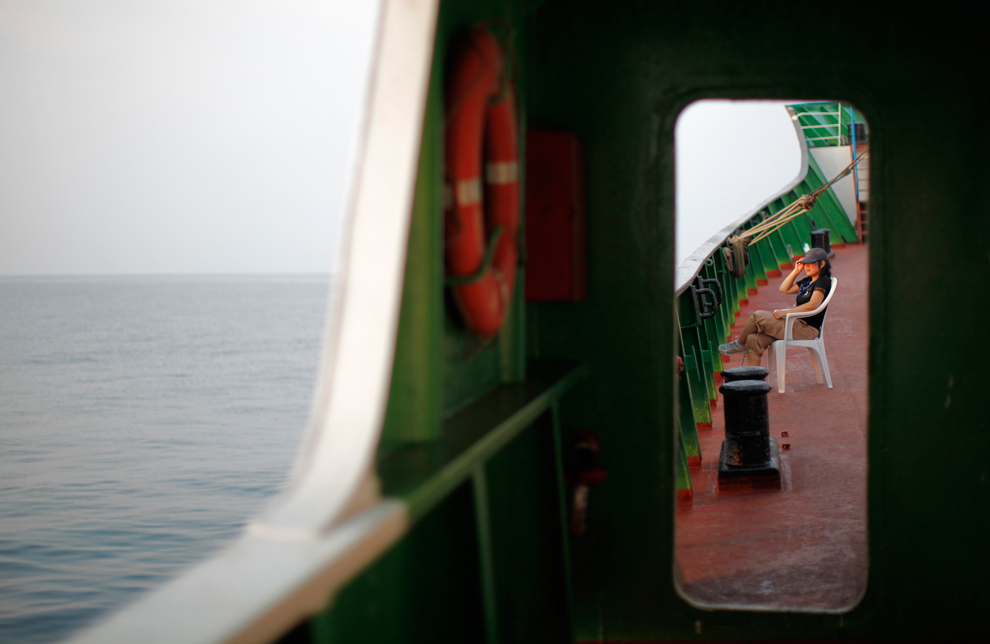
A member of a Chinese tourism delegation has the deck of Mangyongbyong cruise ship to herself as it approaches Mount Kumgang resort on Sept 1. North Korea has only been open to Western tourists since 1987 and remains tightly controlled, but more destinations are gradually opening up to tour groups keen to see the country. Officials said they had bigger plans for the cruise, including a 1,000-passenger ship, if enough interest is expressed. (Carlos Barria/Reuters)
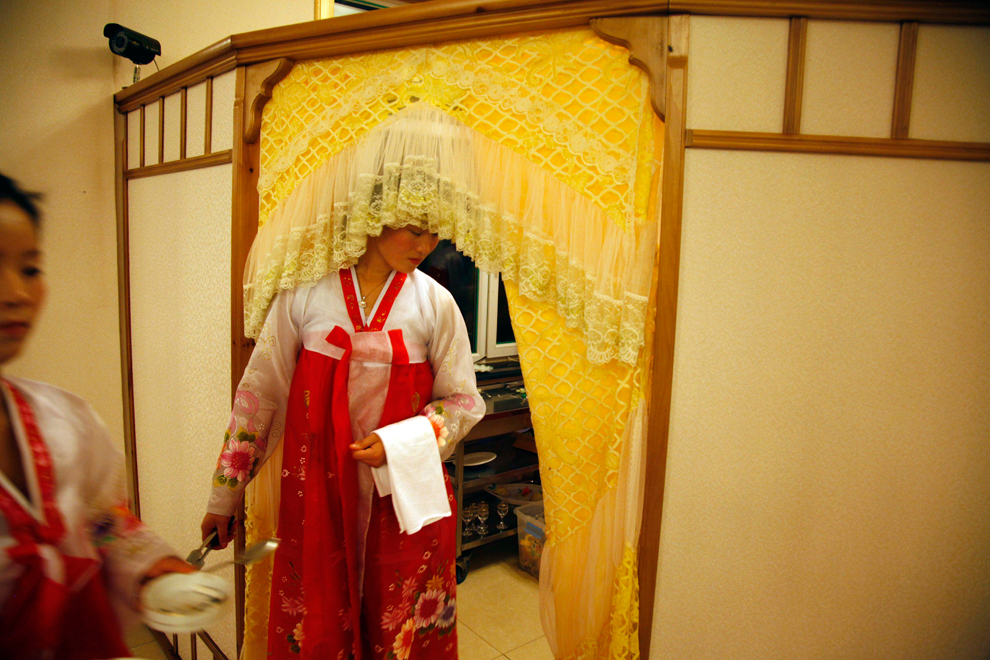
A North Korean waitress serves in a restaurant in Rason city, a separately administered economic zone in North Korea's far northeast. Officials in the city, a few hours' drive from the Chinese city of Yan, have enlisted the help of Chinese businessmen to try to revitalize the area. (Ng Han Guan/Associated Press)
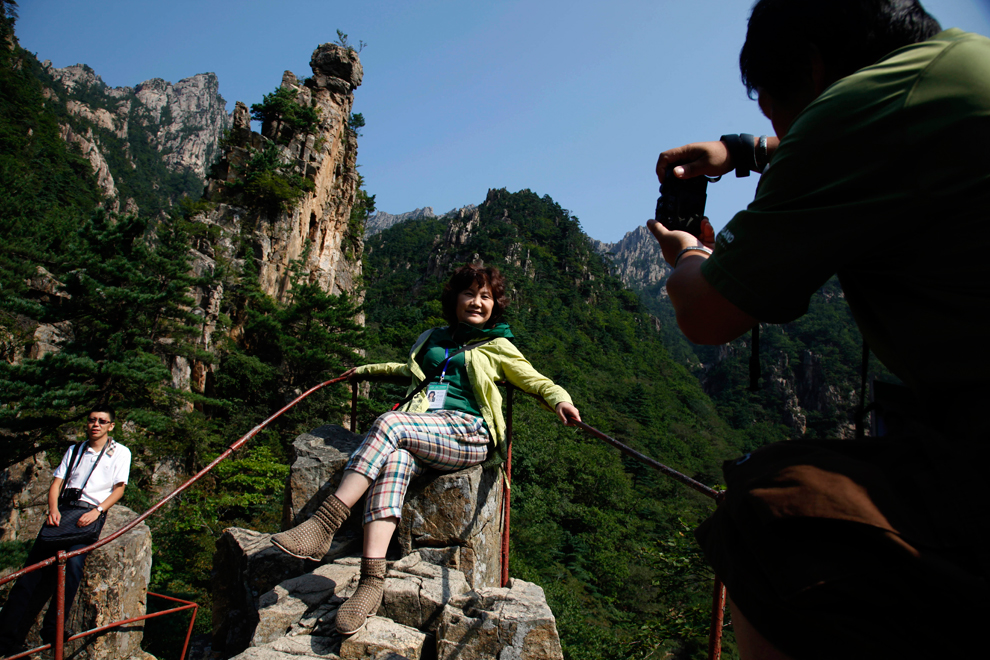
A Chinese tourist poses near mountains peaks at the Kumgang mountain resort in North Korea. Once a shining example of the possibility of reconciliation between the two Koreas, the resort is now at the center of an international dispute. Pyongyang had joined with South Korean businesses to build and run the resort, which had attracted South Korean tourists and much-needed revenues for the North. After a tourist was killed by North Korean guards in 2008, however, the resort has been shuttered. Now North Korea has seized the assets and is trying to lure other tourists to the resort. (AP Photo/Ng Han Guan)
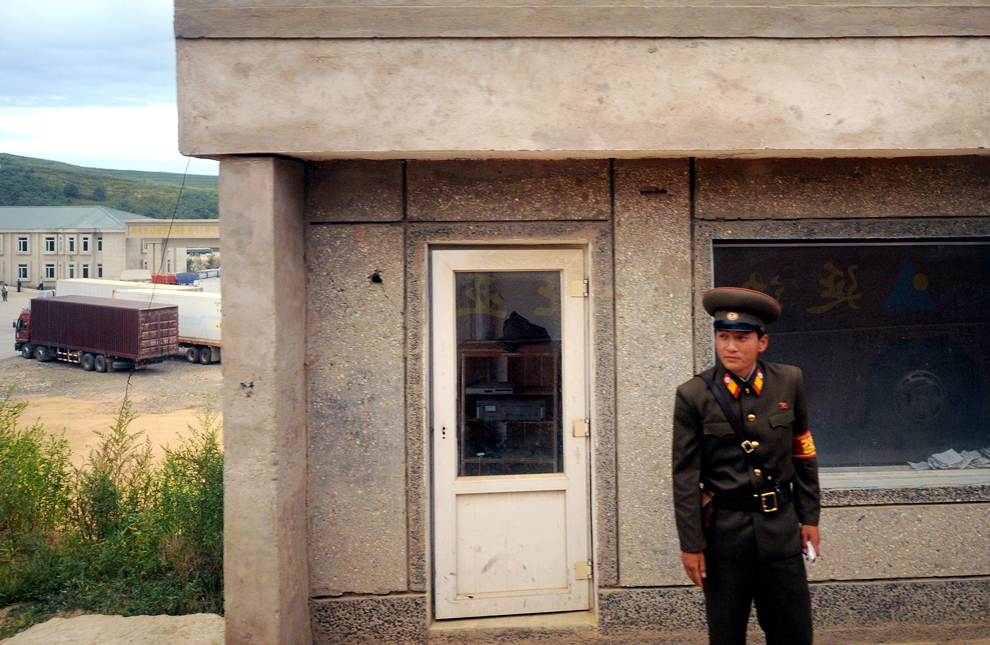
A North Korean border guard watches tour buses pass through the checkpoint into China from the northeastern port city of Rason. China is building a road, Russia a railway, and Thailand is setting up the Internet in Rason, a special area in communist North Korea that is seeking to attract investment from abroad. (Goh Chai Hin/AFP/Getty Images)
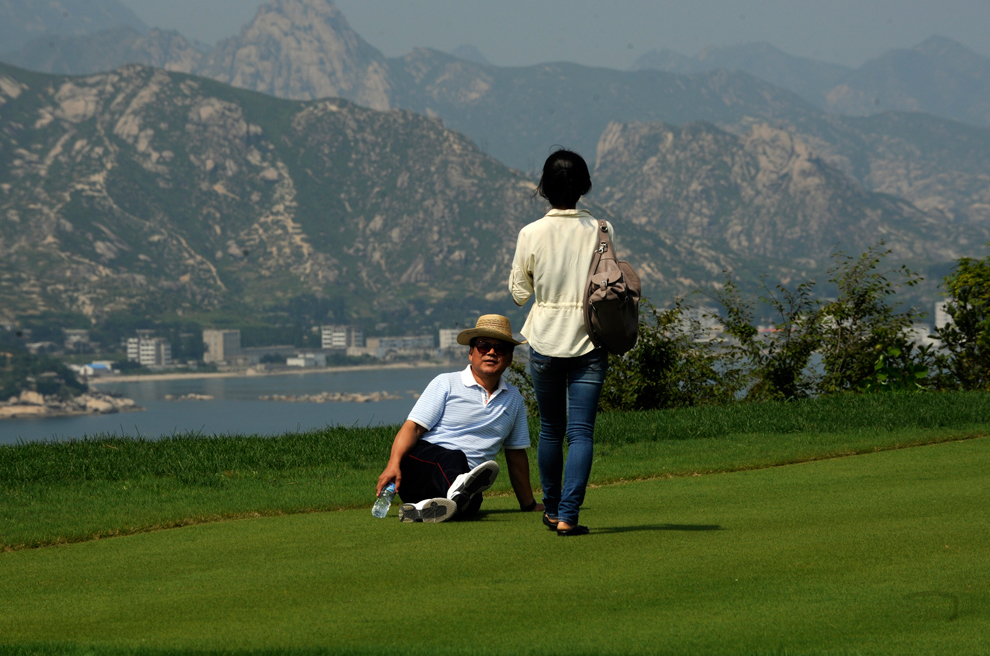
Chinese tourists gallivant along a golf course at the Mount Kumgang resort in North Korea. The course has been closed for three years, after a South Korean tourist was shot to death by North Korean guards at the resort and South Korean officials banned tourists from the site. This summer, North Korean officials started a program reaching out to Chinese tourism officials and others to restore the resort. (Goh Chai Hin/AFP/Getty Images)

Chinese tourists admire the view from a bridge at the Mount Kumgang tourist zone in North Korea. Once a thriving resort and a symbol of cooperation between Seoul and Pyongyang, shops in North Korea's Mount Kumgang are now shut, hotels vacant and the golf course empty. The lush region opened in 1998 as a jointly-run scenic spot for South Koreans, but tours there were suspended after a North Korean soldier shot dead a visitor from the South who had strayed into a restricted zone in July 2008. (Goh Chai Hin/AFP/Getty Images)

A member of a Chinese delegation takes pictures at the costal area of the Mount Kumgang resort in North Korea, near its border with South Korea. Long grass grows around the idle hotels here, shops are covered in cobwebs, and a big padlock hangs off the front of the bank at the deserted shopping center. This is a North Korean ghost-town, one funded by its wealthy southern neighbours. The deserted Mount Kumgang tourist resort was once a symbol of cooperation between the two Koreas, but today is stark reminder of the big divide that still stands between the sides who are still technically at war having only signed an armistice, not a peace treaty, to the end 1950-53 Korean War. Three years ago the shooting of a South Korean tourist by a North Korean soldier here resulted in Seoul halting tours to the complex, effectively drying up a source of much needed hard currency for the impoverished North. Now, North Korean officials are reaching out to Chinese tourism officials in an effort to reopen the resort. (Carlos Barria/Reuters)

A Chinese tourist poses near a portrait of the North Korean leader Kim Jong Il at a theater in Rason. Kim, whose government is the target of international sanctions of its nuclear weapons program and testing, has been reaching out to China and other nations for help in rebuilding his nation's infrastructure in an attempt to bring in much-needed currency. (Ng Han Guan/Associated Press)
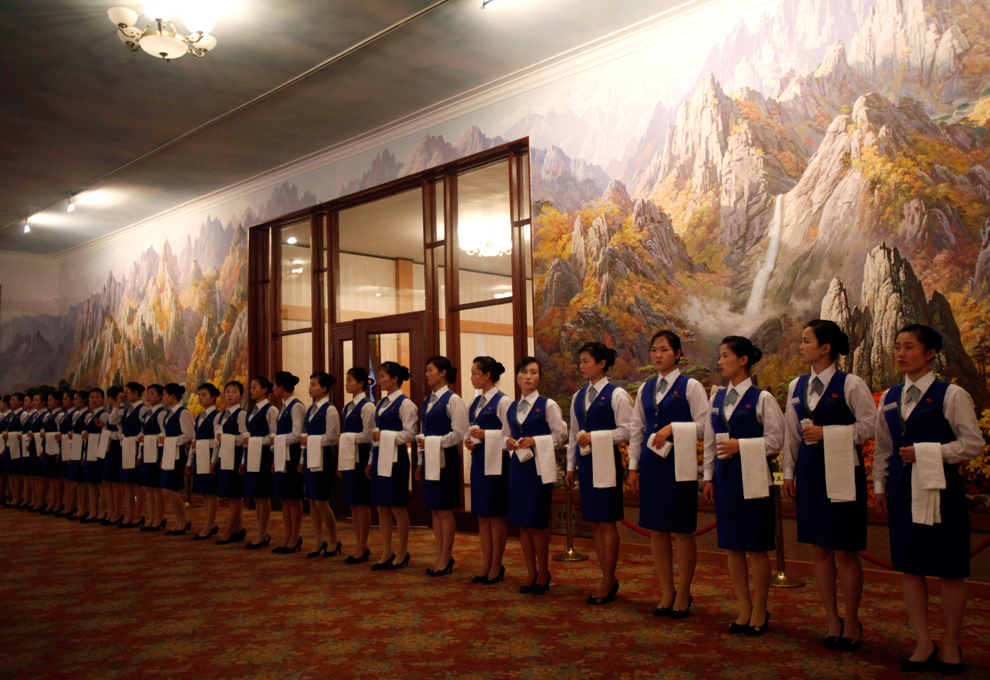
North Korean waitresses stand by for waiting tables at a hotel in Mount Kumgang in North Korea on Aug. 31. Since South Korean tourists have been barred from the luxury resort, known abroad as Diamond Mountain, North Korea begun during the summer courting Chinese and other international tourists. (Ng Han Guan/Associated Press)
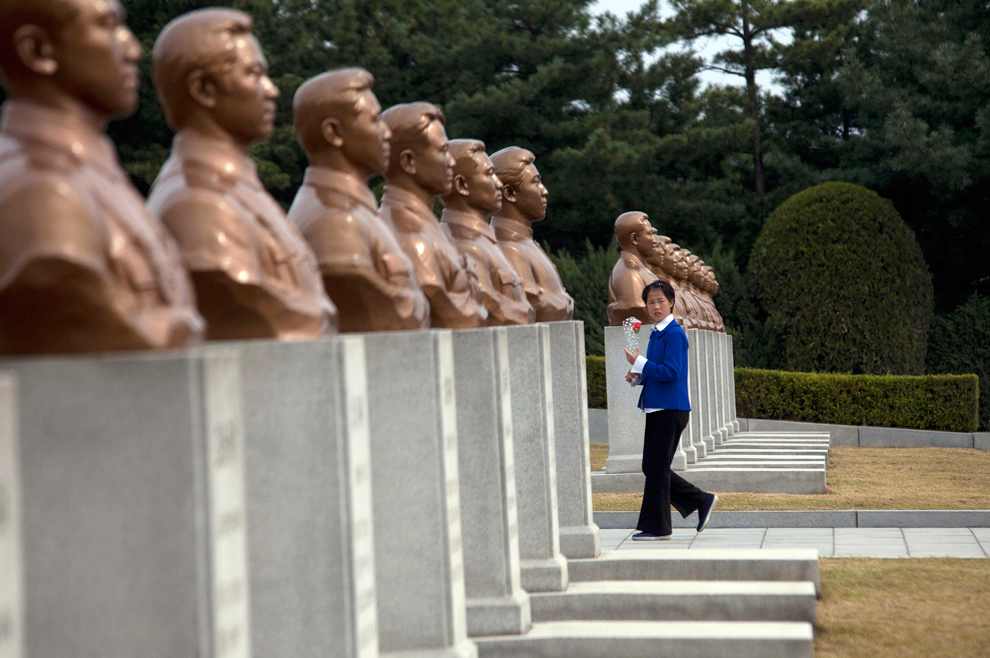
A girl carries a flower through a memorial cemetery in Pyongyang, North Korea, for men and women who died fighting against the Japanese occupation. The Korean peninsula was a kingdom for centuries before Japanese forces occupied it after their war with Russia in 1905. The peninsula was taken from Japan after World War II and split into communist north and democratic south. (David Guttenfelder/Associated Press)

A member of a marching band has her photo taken with a woman and young boy at an event to mark the birthday of Kim Il Sung at a park in Pyongyang, North Korea. Kim is considered the founder of the nation. The regime of his son, Kim Jong Il, has marked 2012, the centenary of Kim Il Sung's birth, a banner year and has been trying to bolster its economy to support festivities. (David Guttenfelder/Associated Press)
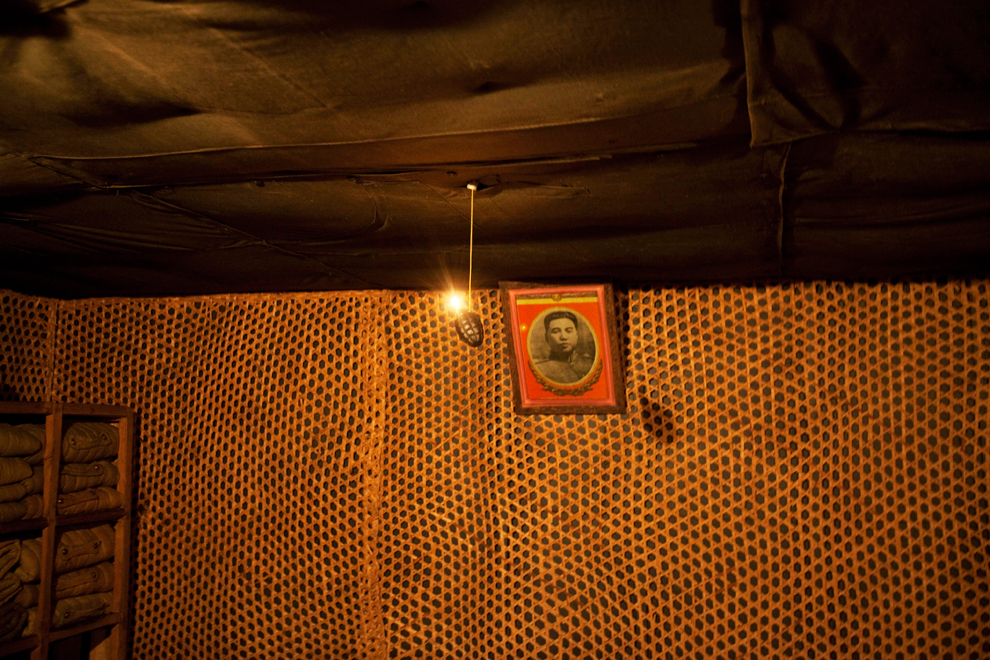
A photograph of Kim Il Sung hangs on a wall next to a light made from a grenade inside an exhibit, made to look like underground bunkers used during the resistance against the Japanese occupation, at the war museum in Pyongyang, North Korea. Kim was a guerrilla leader, then an officer in the Soviet Red Army in its successful taking of the Korean peninsula. (David Guttenfelder/Associated Press)


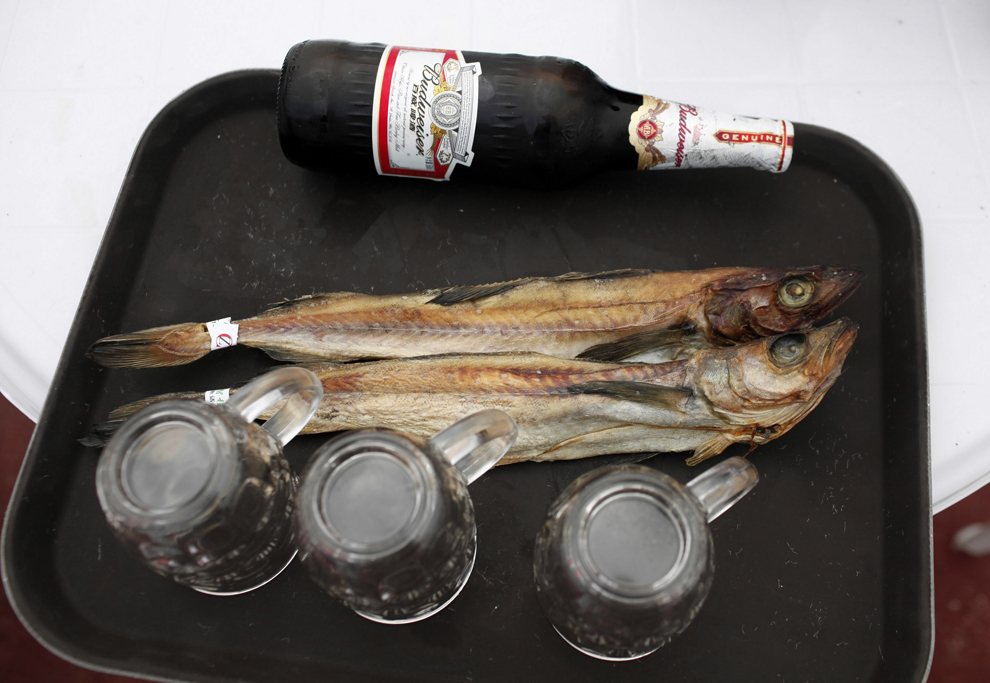
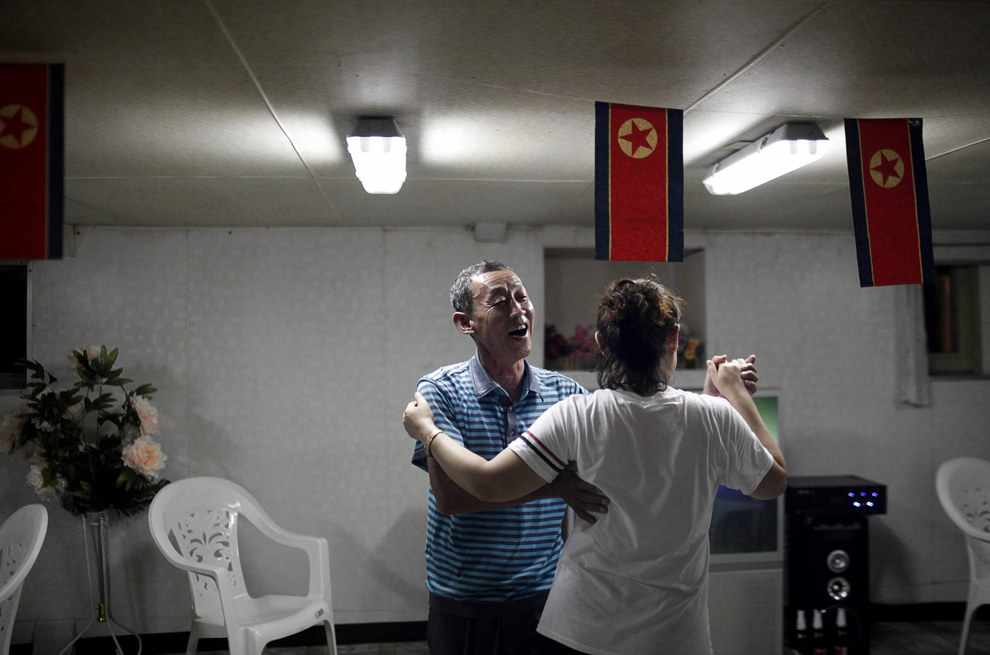

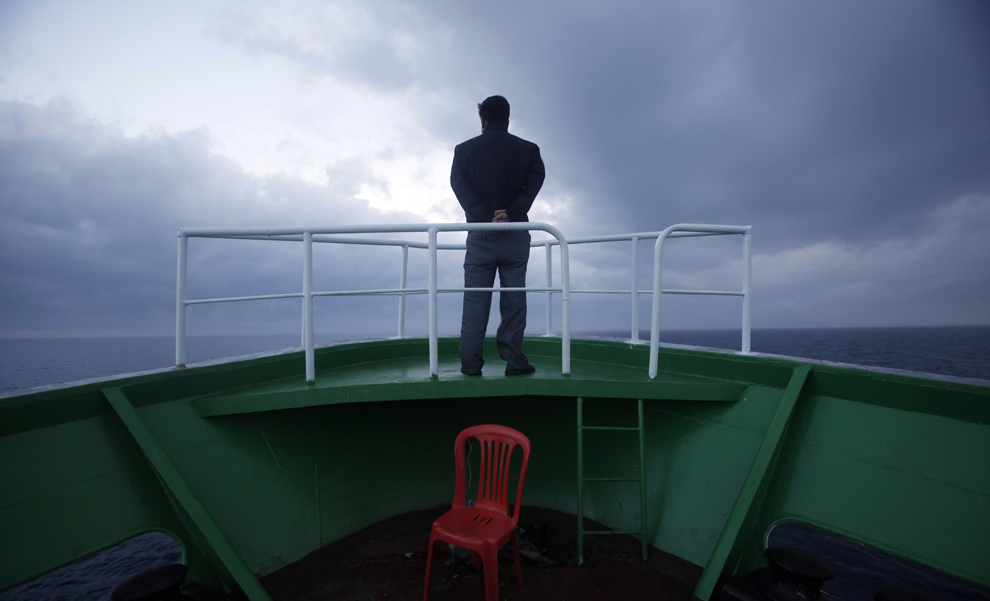

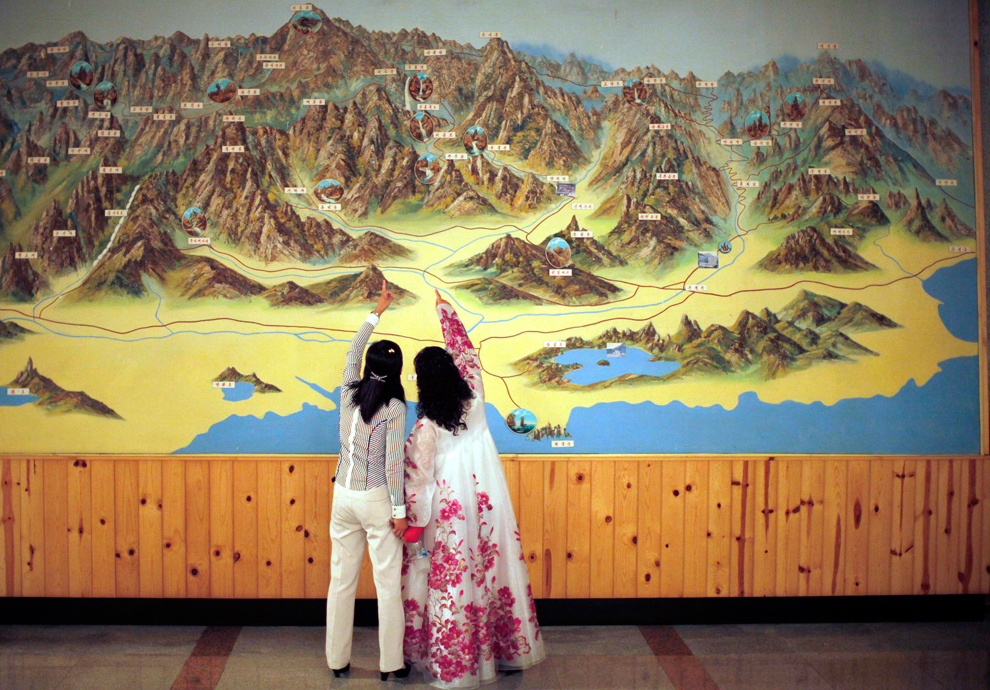
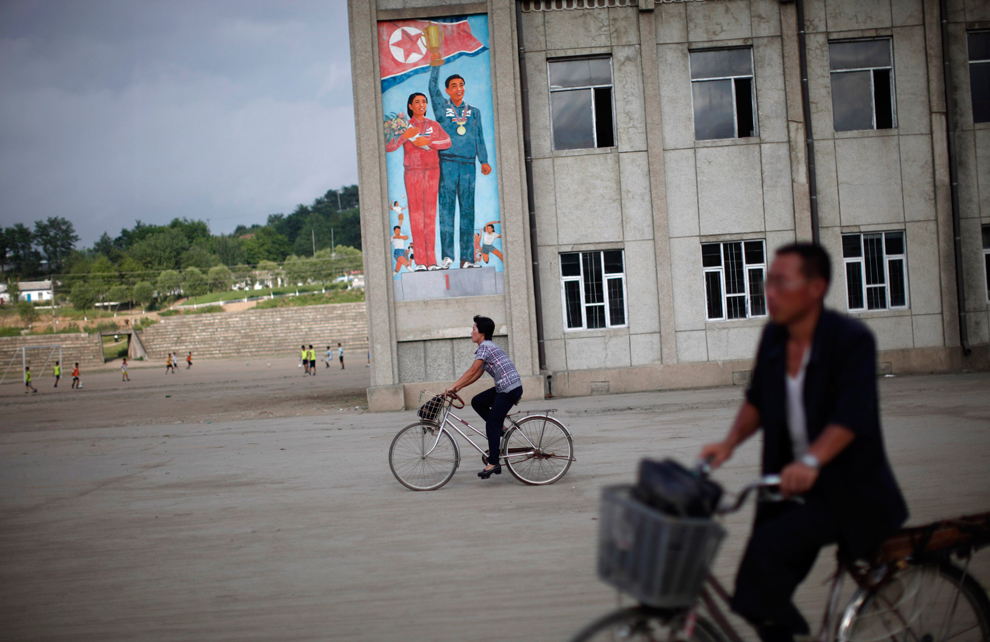
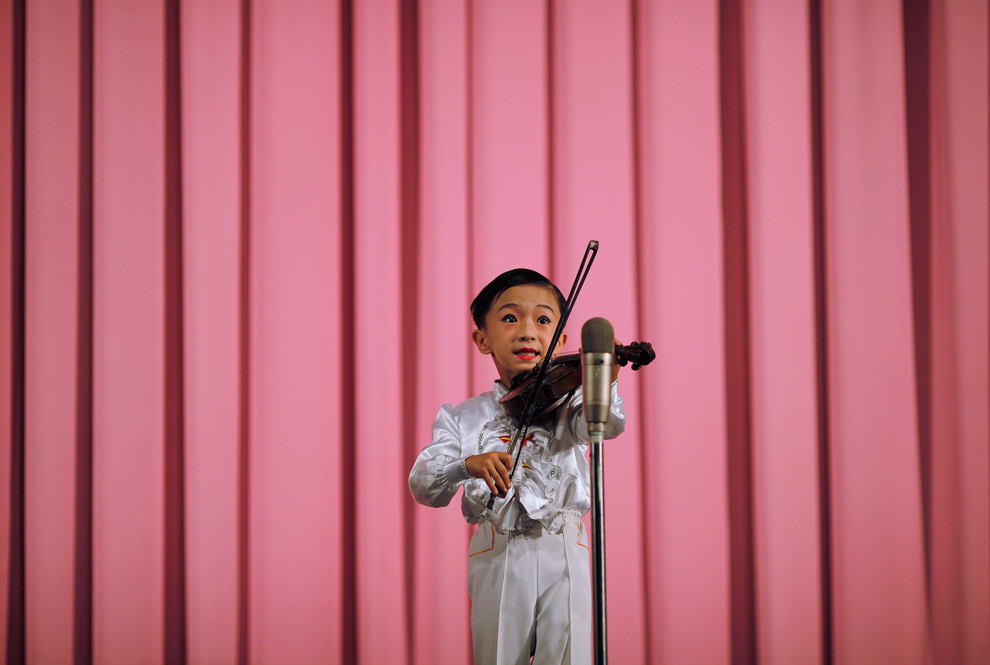

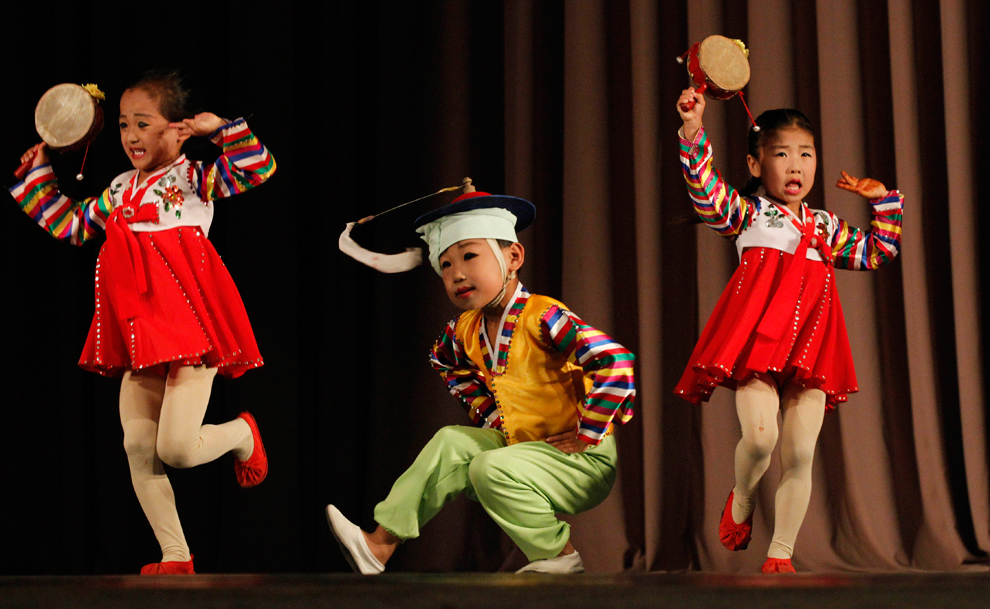
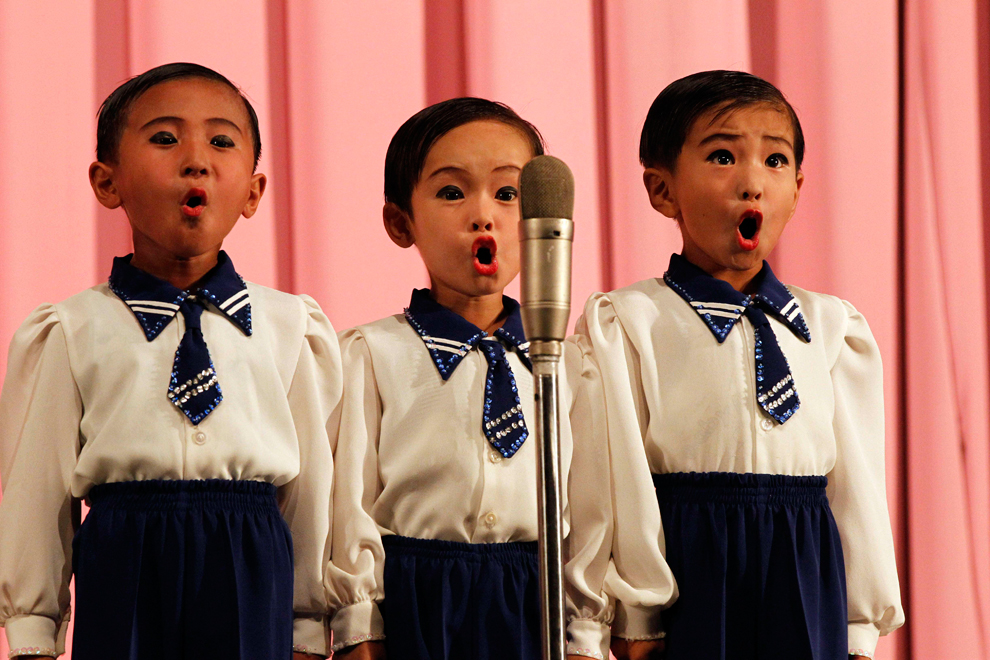
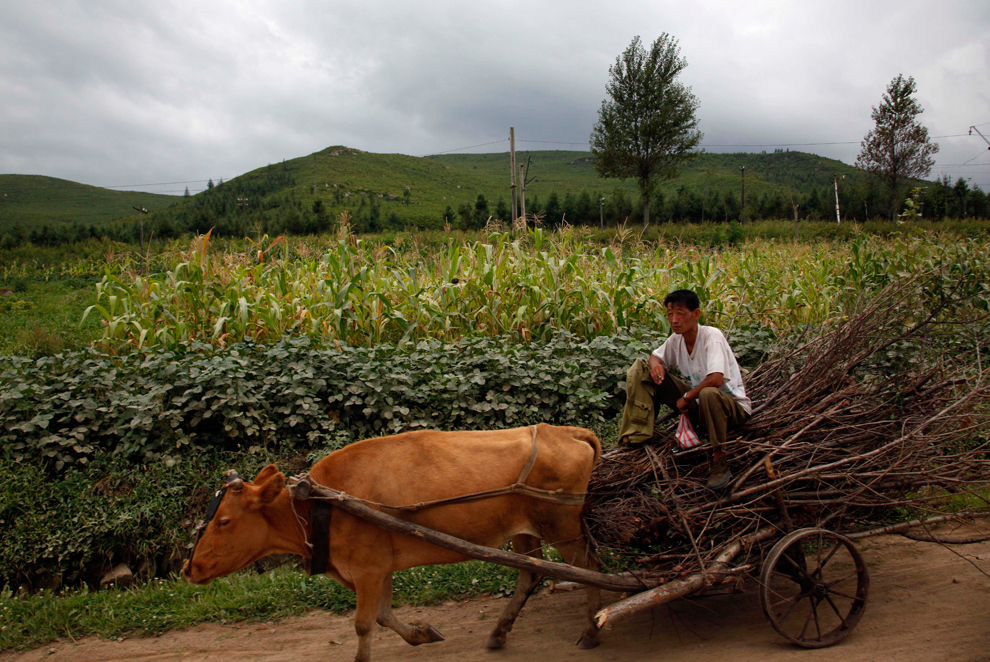
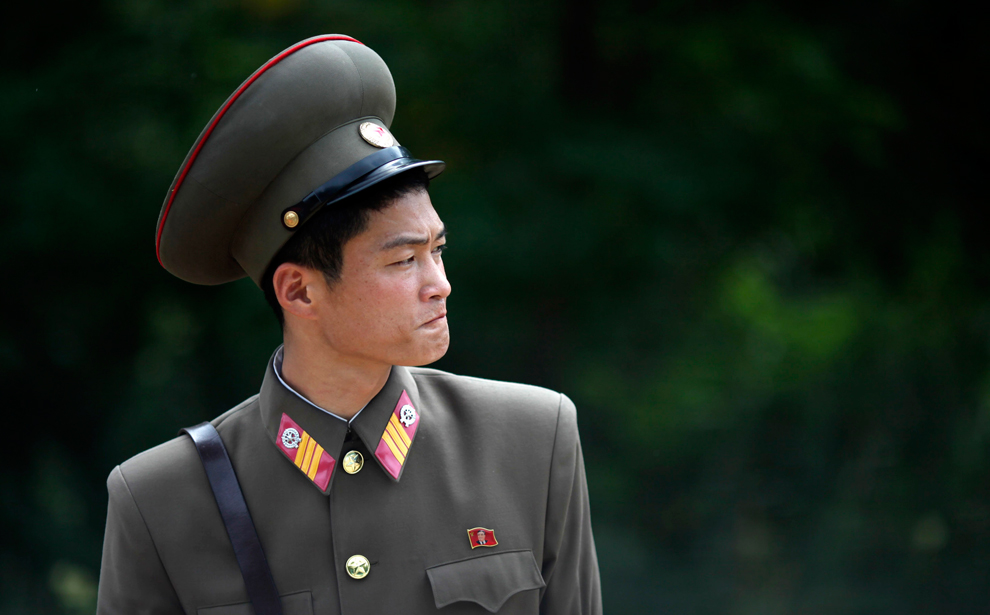

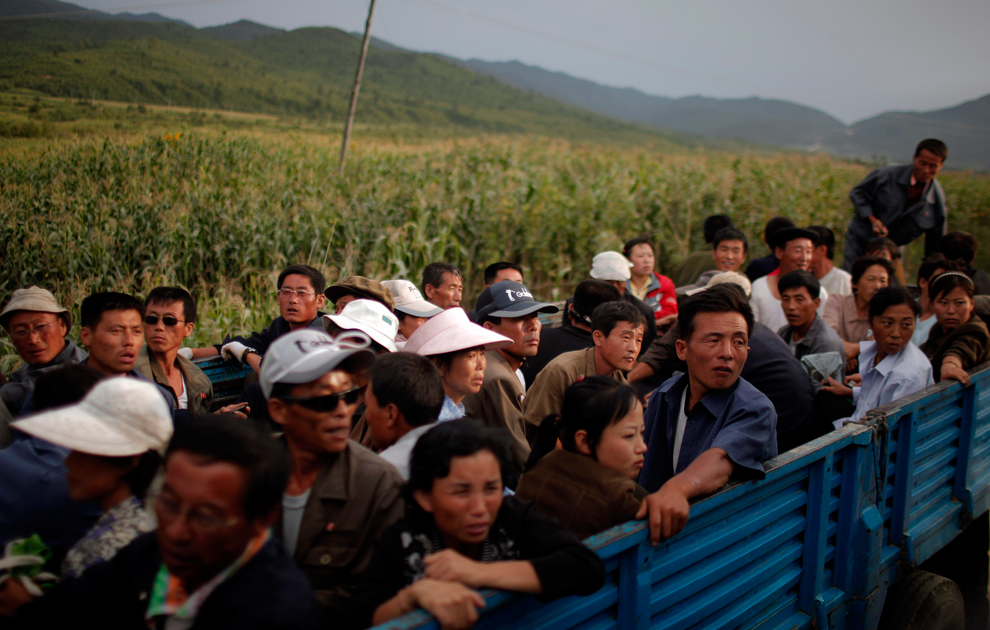
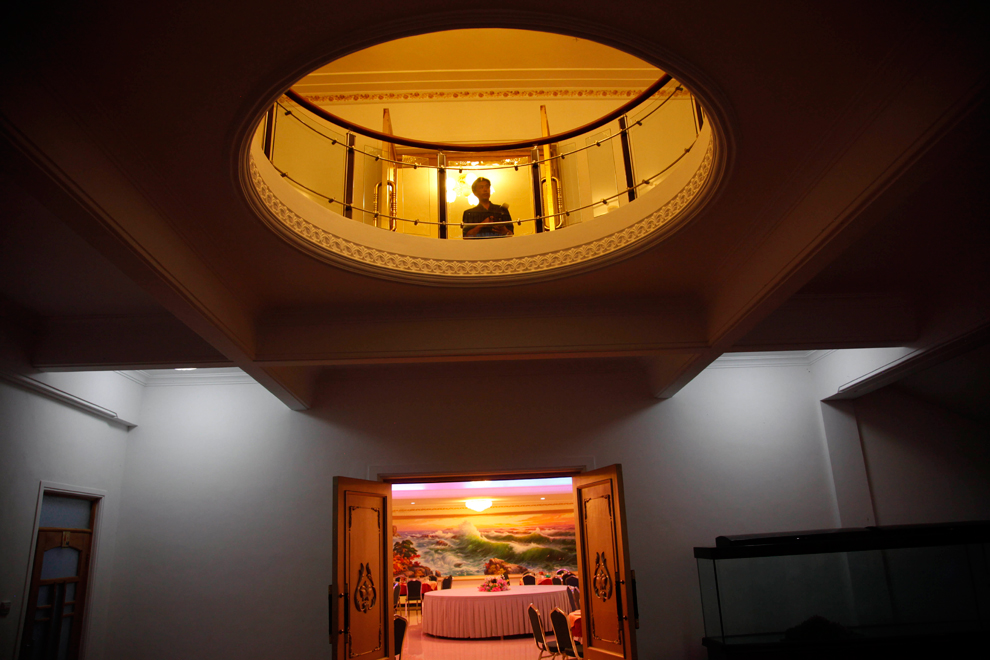
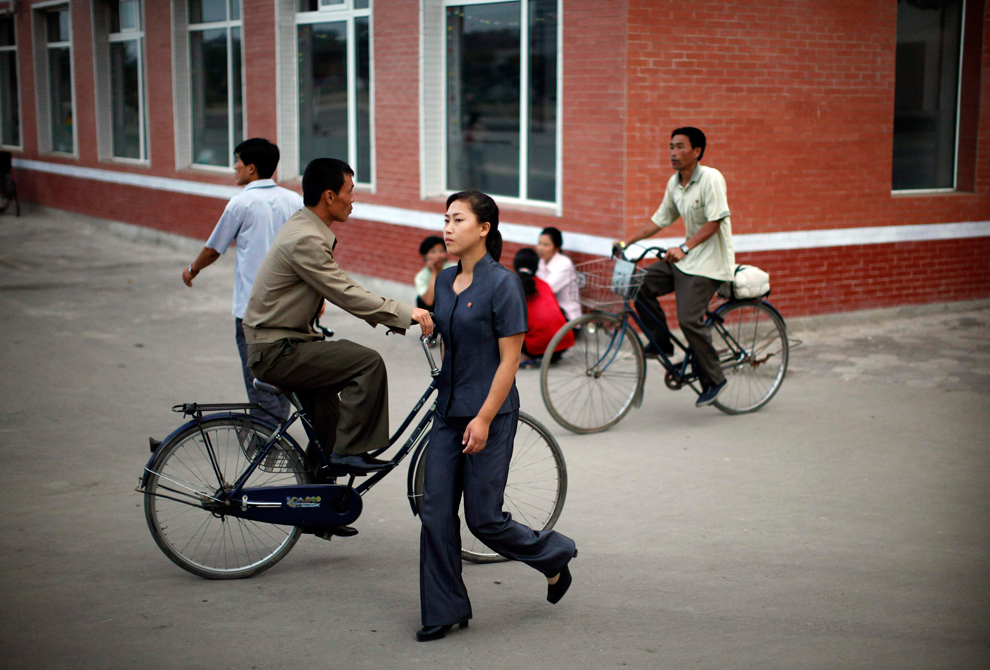

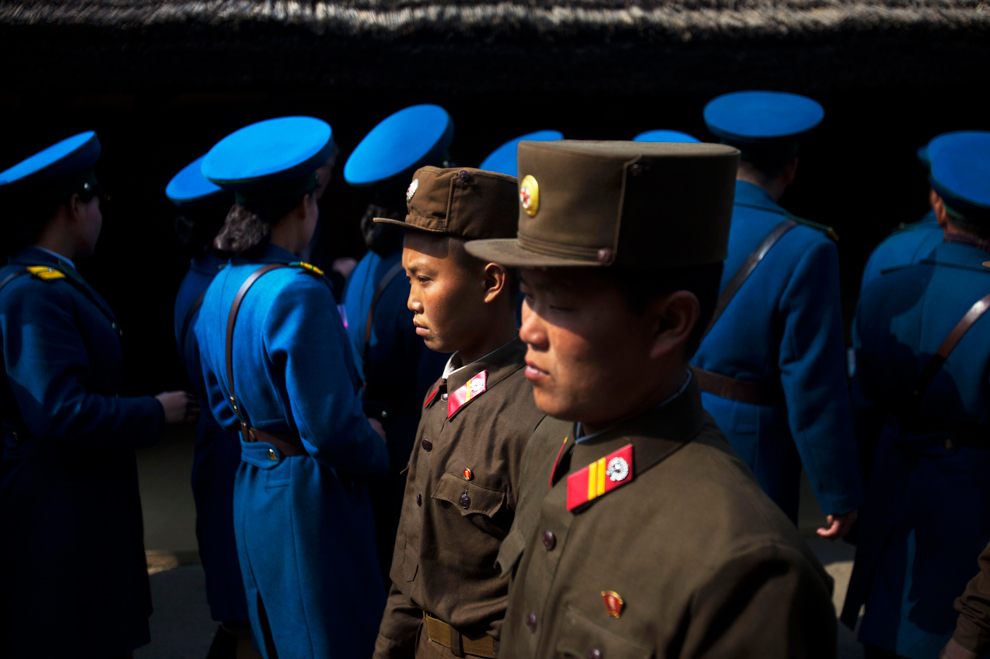
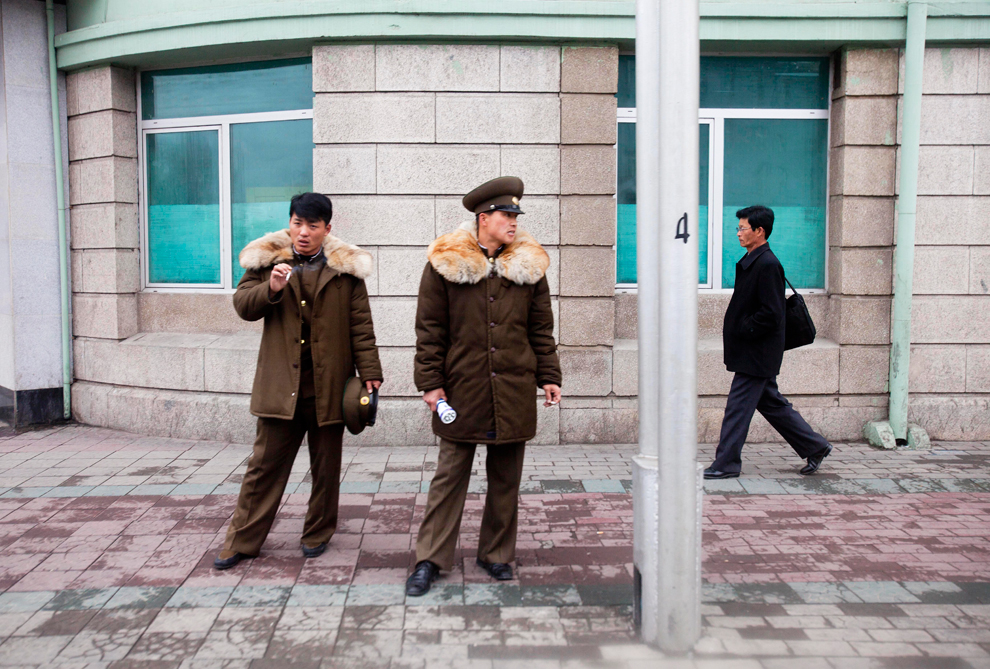
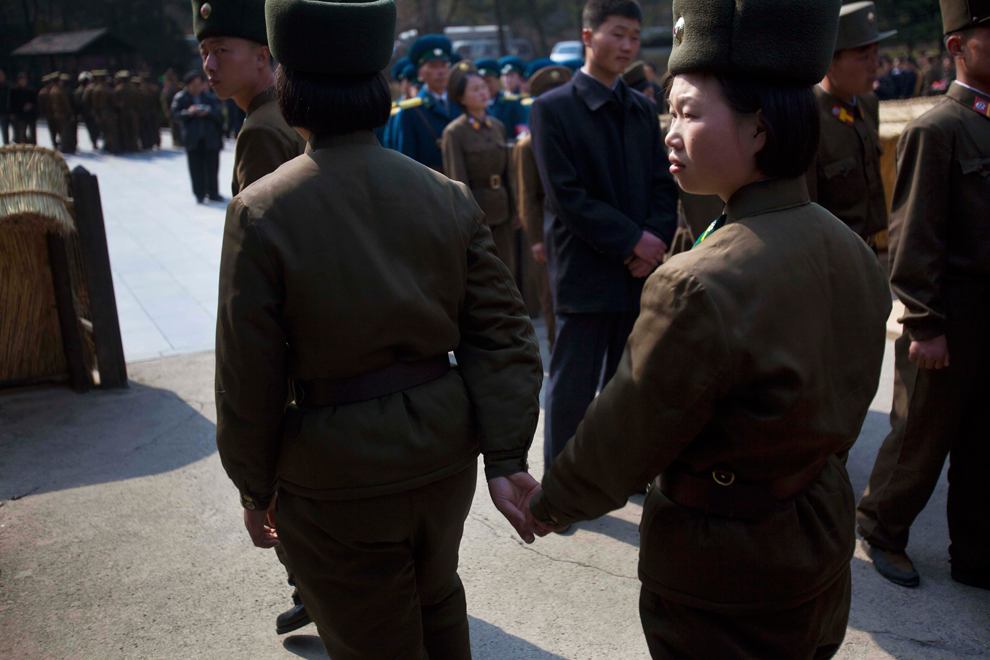
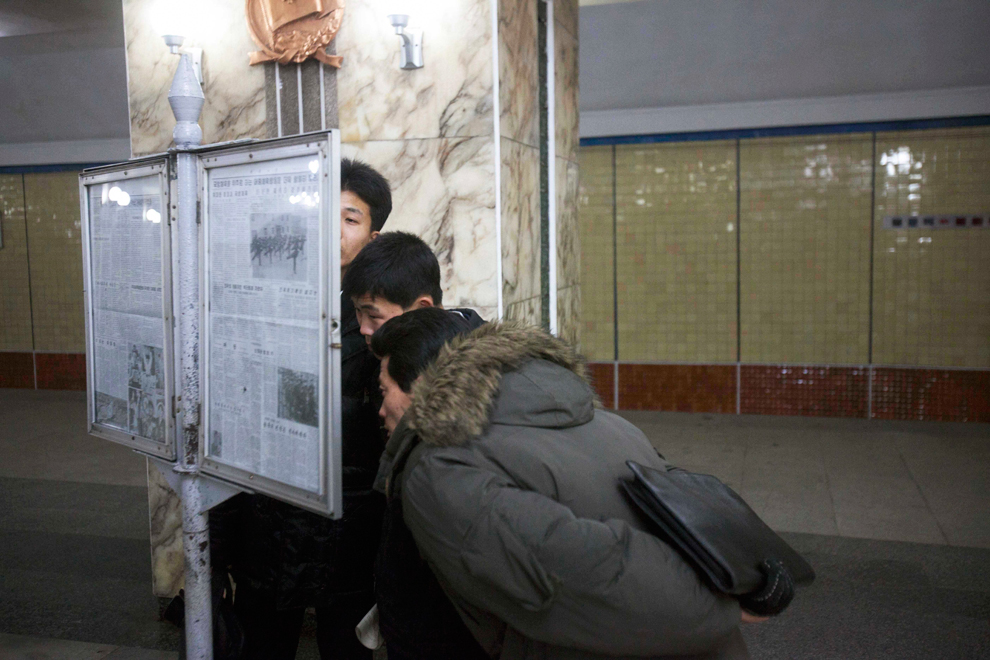
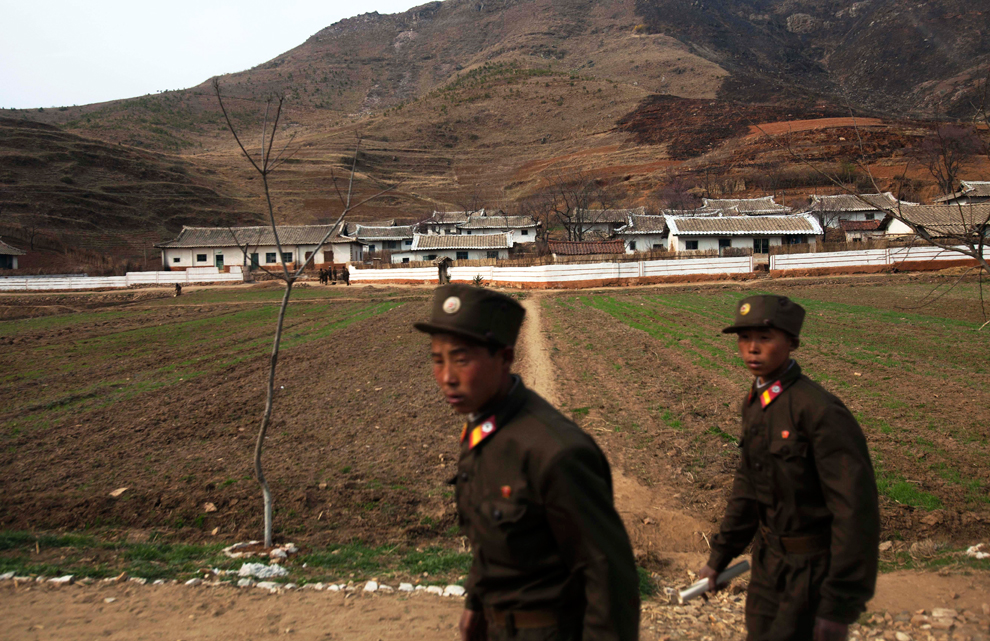
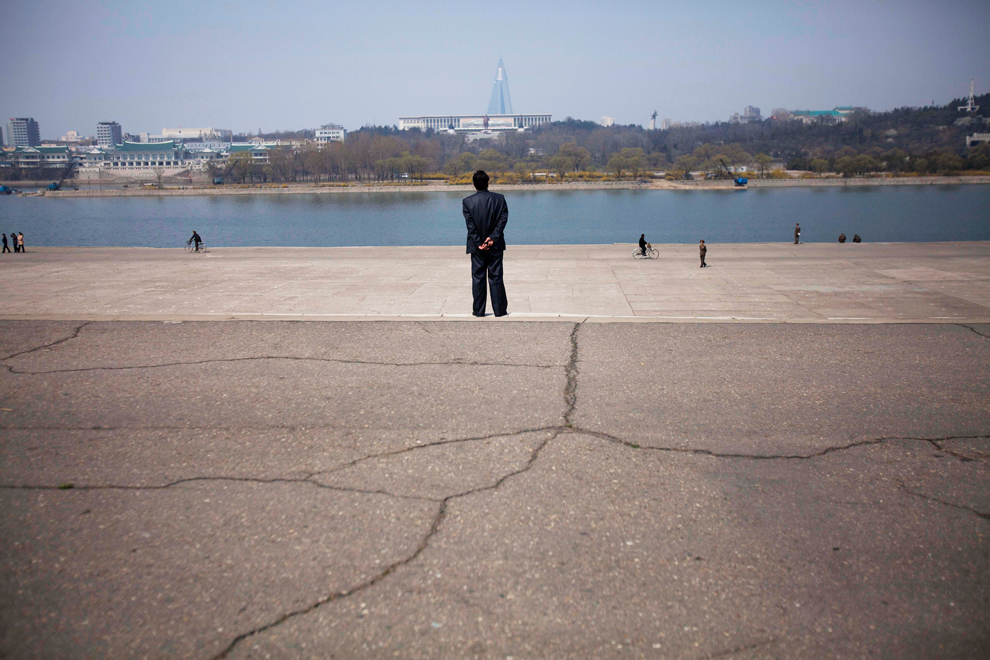
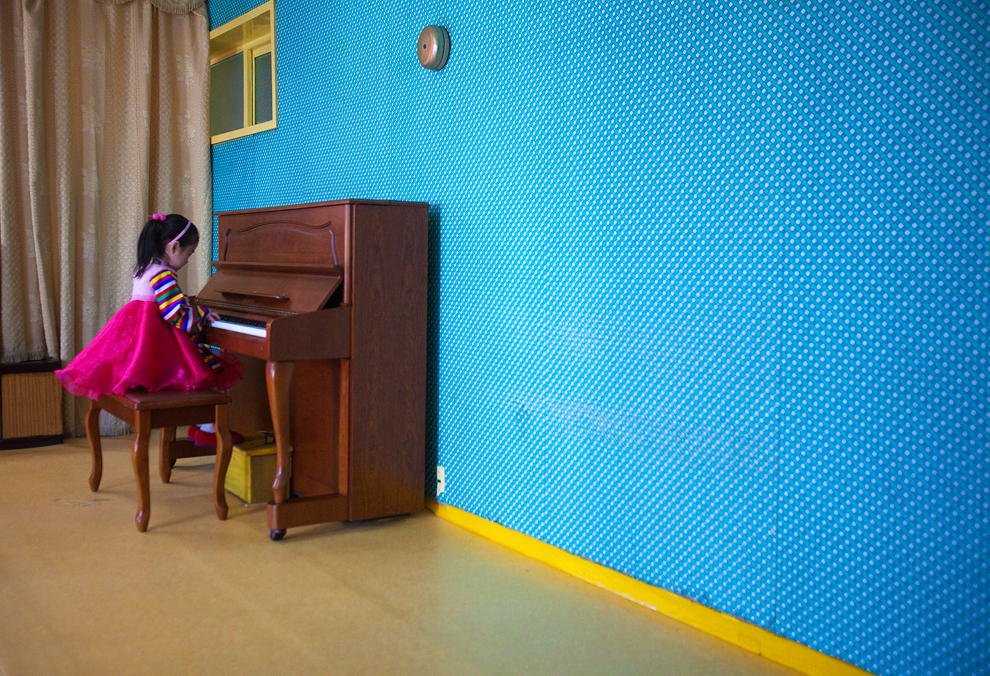


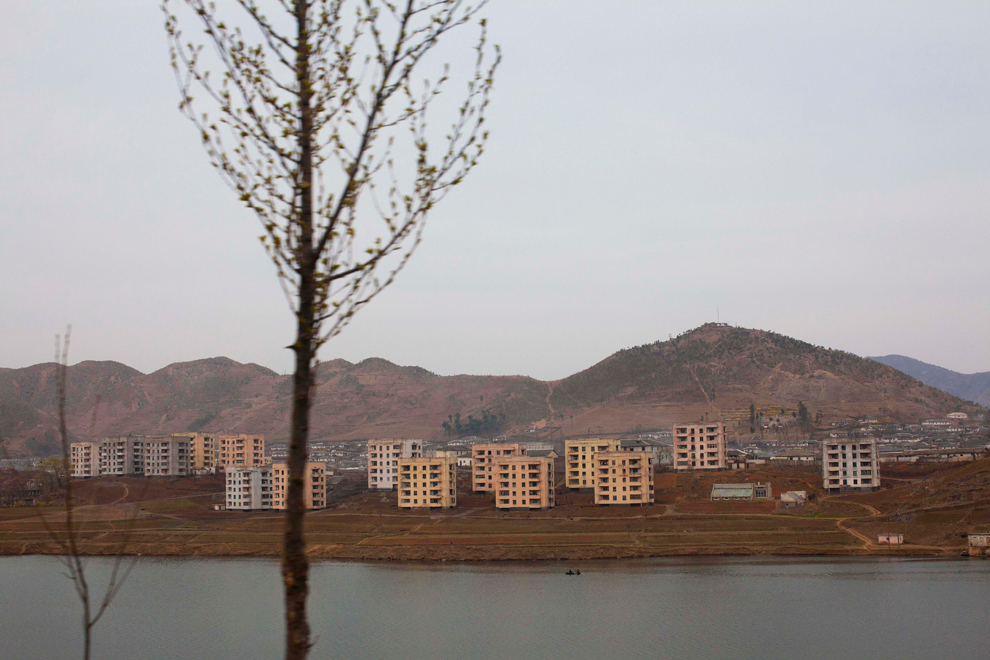
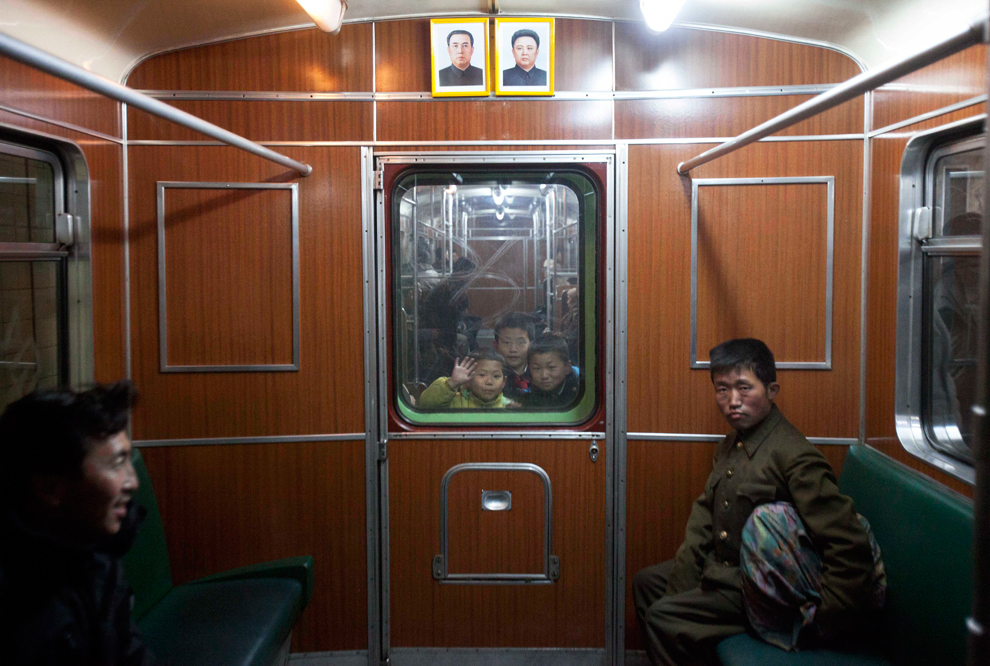
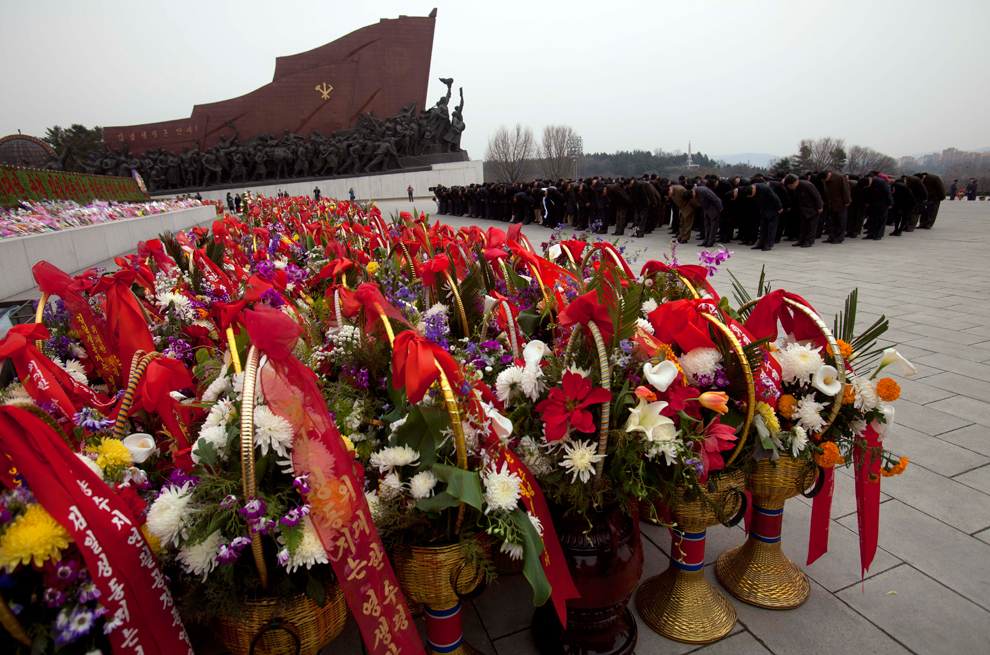
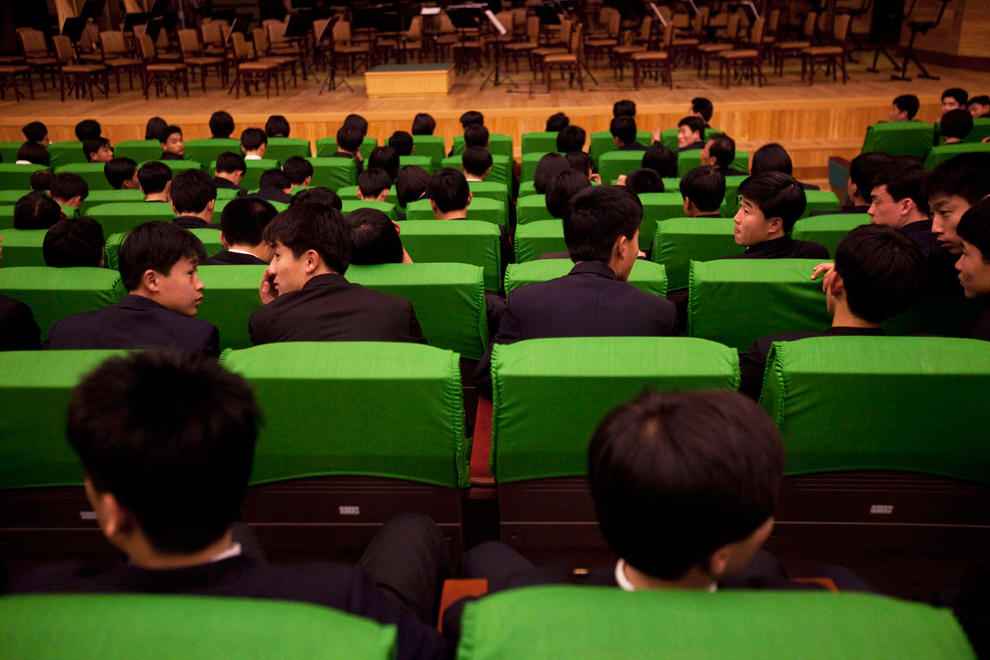
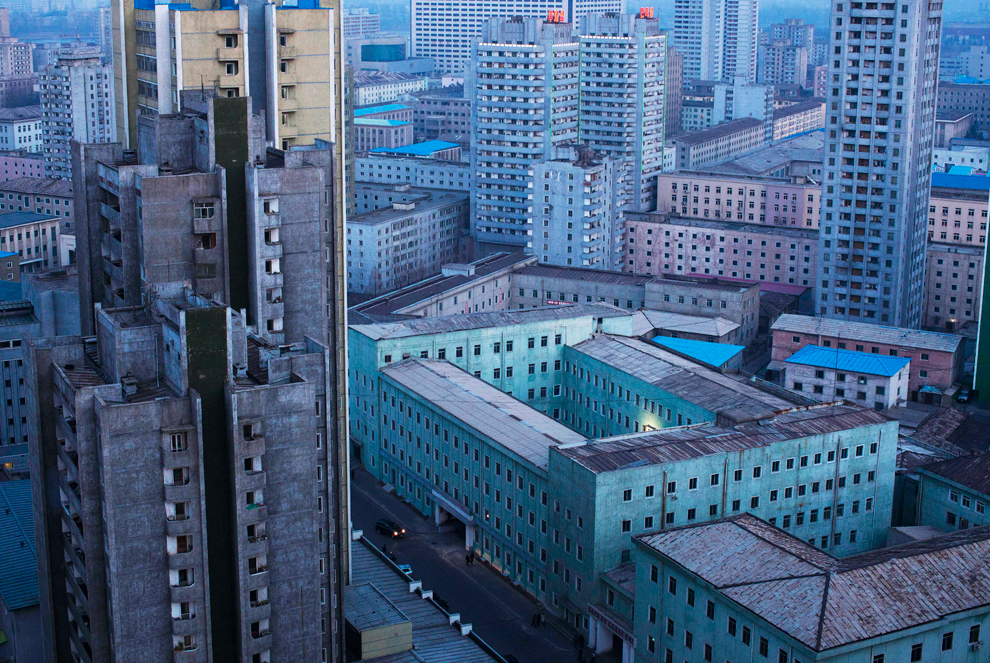
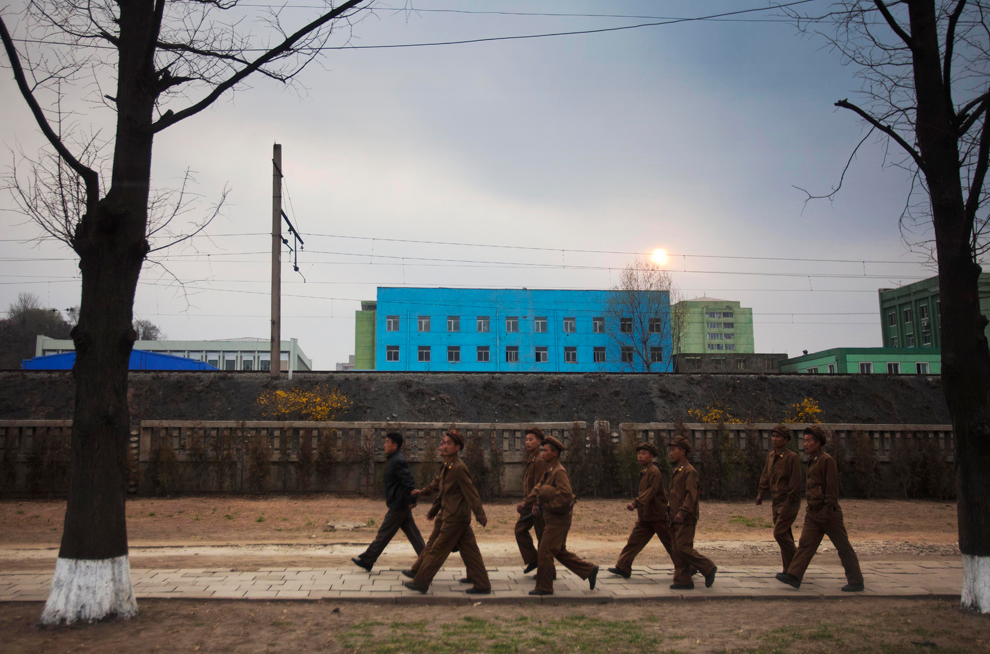
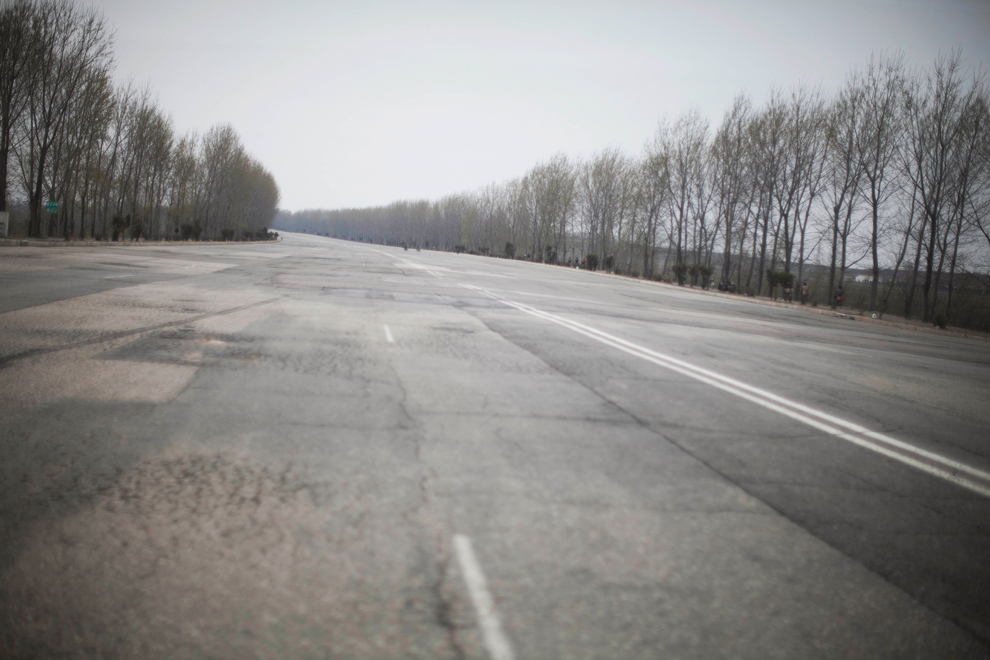
No comments:
Post a Comment